A self-described computer geek has revealed a previously secret "easter egg" image file buried in the ROM code of the 27-year-old Power Macintosh G3 that shows the team that worked on the project.
Doug Brown, who maintains a blog that documents his experiments and research into older computers, said that he the Easter egg while looking through resources in the Power Mac G3's ROM. This model was made by Apple between November 1997 and August 1999.
The same ROM was used for the minitower, all-in-one, and beige desktop models. Brown said he was spending "a lazy Sunday" using a pair of tools called ROM Fiend and Hex Fiend to look through the G3's ROM resources.
He shortly spotted two undocumented anomalies. The first was a resource of type HPOE that contained a JPEG image. This had been by another ROM researcher, Pierre Dandumont — but that discovery did not reveal what the JPEG file would show if extracted.
The second, discovered by Brown, was a nitt resource with ID 43, named "Native 4.3." This turned out to be the PowerPC-native SCSI Manager 4.3 code. The SCSI manager was expected and routine, but Brown noticed at the very end of the data some unexpected Pascal strings.
The strings made reference to ".Edisk," "secret ROM image," and "The Team." Brown wrote that "the "secret ROM image" text in particular seemed like it could be related to the picture Dandumont had uncovered, but was unable to reveal.
"Some quick Internet searching for the phrase 'secret ROM image' revealed that it had been used for Easter eggs with earlier PowerPC Macs," Brown noted. "On those machines, you just had to type the text, select it, and drag it to the desktop. Then, the picture would appear."
However, that approach didn't work with the secret G3 image. Brown then fed the extracted file into , a framework for software reverse engineering. After analyzing the code twice, Ghidra was able to discover an e-disk driver, which would create a RAM disk.
From code to picture
It remained a mystery as to how to get the buried and secret picture to display. A collaborator who was following Brown's discovery and running a browser-based emulator tool called came up with the answer: create and format the RAM disk, and give it the name of "secret ROM image."
This creates a RAM disk that contains a single file: a text file called "The Team." Double-clicking the file opens SimpleText, which displays the image. Since then, various Apple team pictures have been discovered in other models from that era.
Brown's post on the discovery led to a comment by one of the people pictured in the first of the secret images, Bill Saperstein. He is seen as the fourth person from the left in the second row.
"This resulted from an Easter egg in the original PowerMac that contained Paula Abdul (without permissions, of course)," Saperstein noted.
The team opted to put a picture of themselves in the ROM of the G3, "but we had to keep it very secret," he added. Steve Jobs apparently ended the practice when he returned to the company in 1997.
 Charles Martin
Charles Martin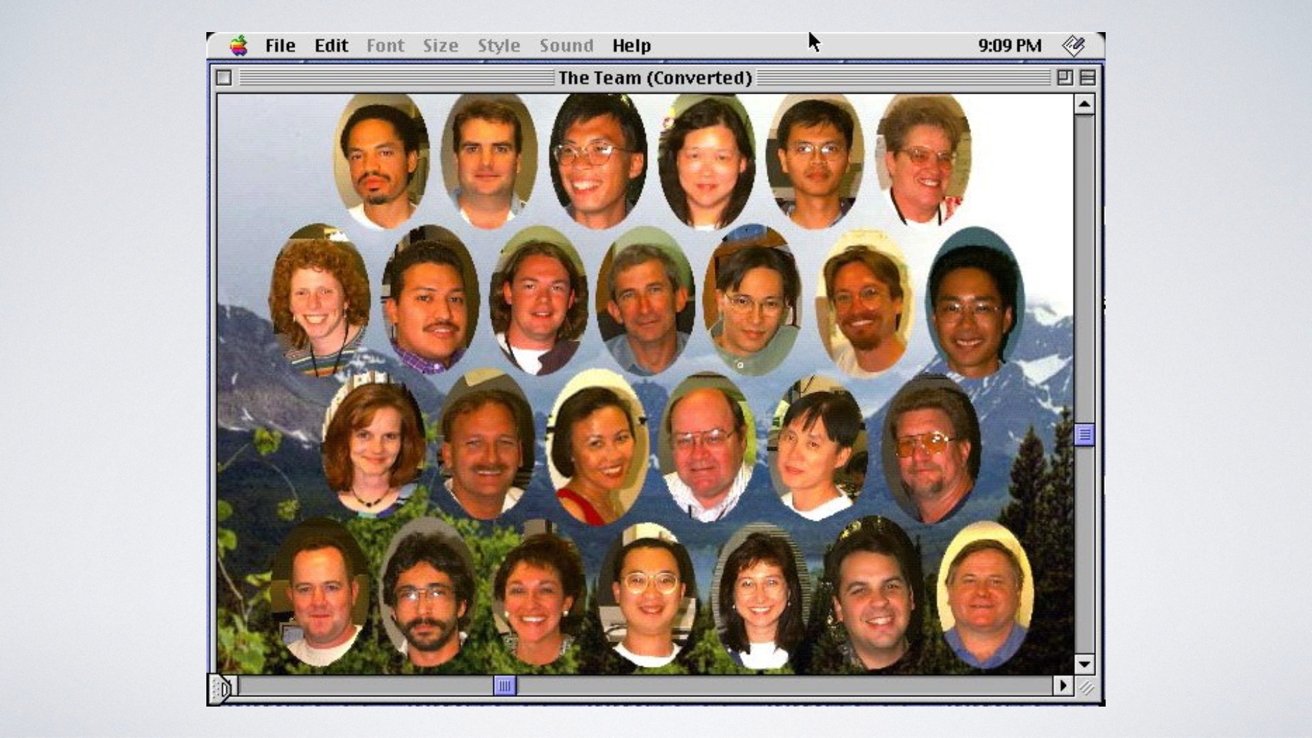
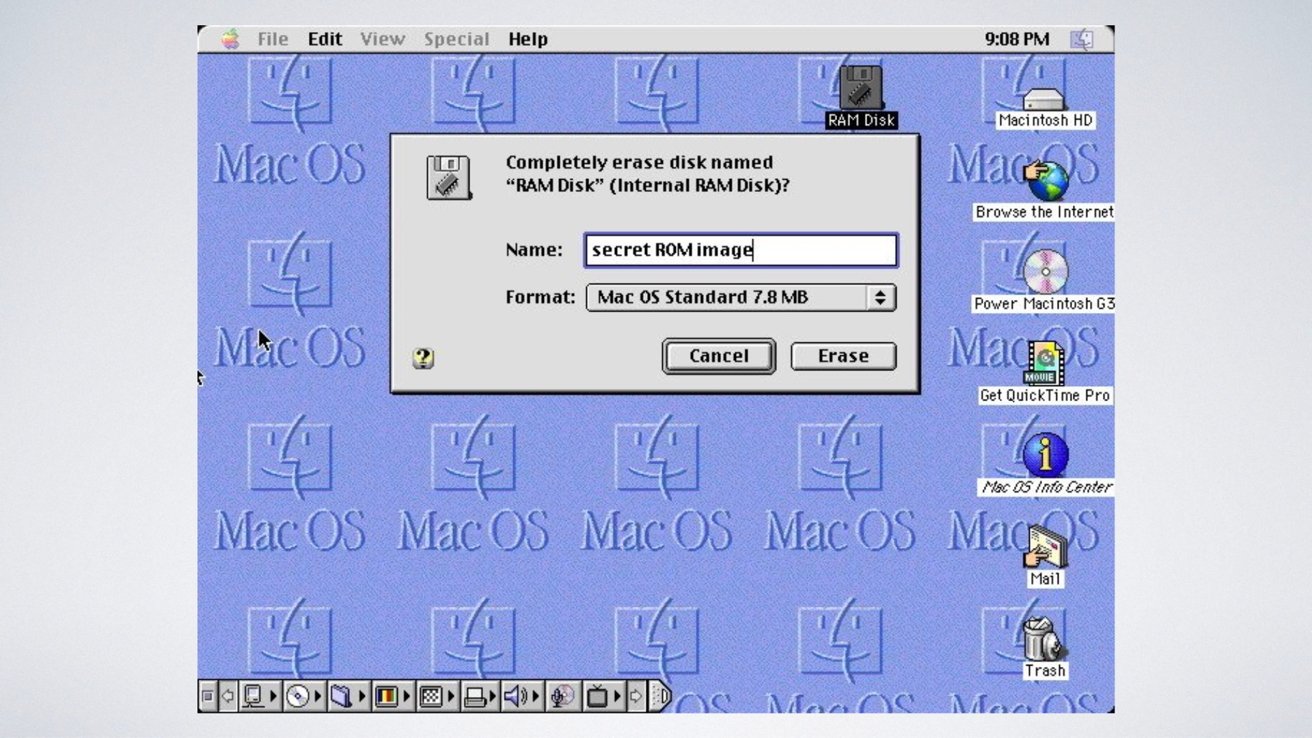
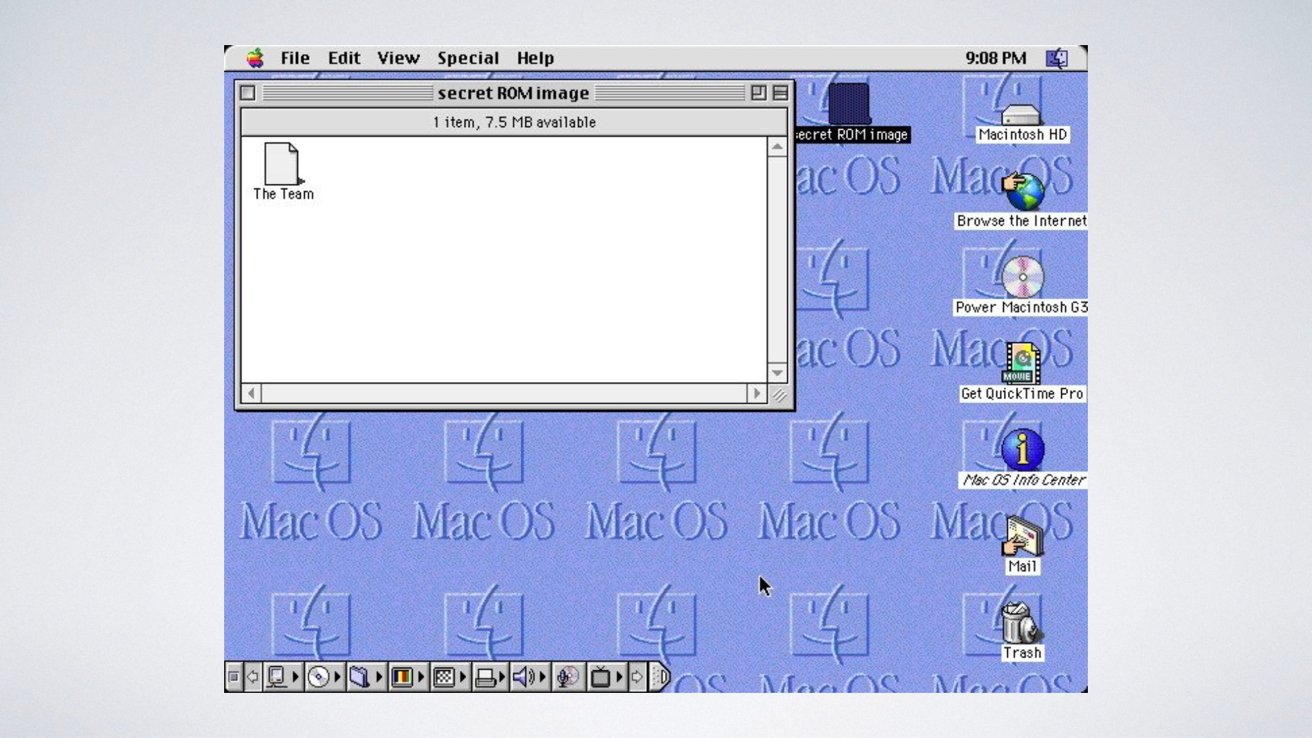



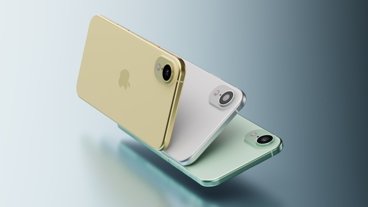





-m.jpg)
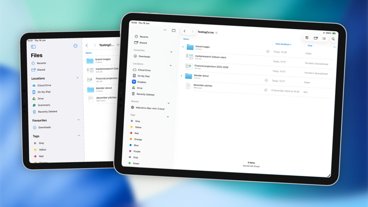




 Christine McKee
Christine McKee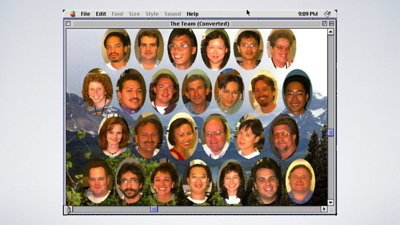


 Sponsored Content
Sponsored Content
 Mike Wuerthele and Malcolm Owen
Mike Wuerthele and Malcolm Owen
 Amber Neely
Amber Neely
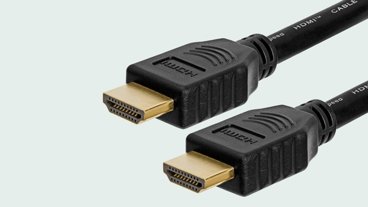




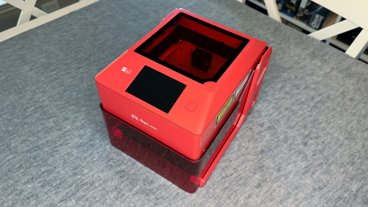



2 Comments
I remember when an easter egg was discovered in the CDROMs shipped with my brand new PowerMac 8100/80. There was a pic of Paula Abdul in a swimsuit on the disc, Apple management was outraged. Shipments were halted while new CDROMs were mastered and produced, every boxed machine was unpacked, the CDs replaced, and then shipped. I got my 8100/80 six months after I ordered it, and the model was discontinued one month later. Grrr..
Easter eggs were always fun. I used to put them in my shareware. I made it easier to find so even with my limited market users would find them and get back to me and other users. Too bad Jobs ended the tradition. Maybe it has been revived?